A Brief History of Shaving
For thousands of years, men and women have been hacking and burning the hair from their bodies. It’s something of a love-hate relationship, and shaving has become a daily part of life. Did you know, for example, that men spend approximately 3,000 hours of their life shaving? That’s a lot of time in front of the mirror, folks.
However, we certainly aren’t the first to have such a long and rigorous shaving routine. In fact, the Egyptians, Ancient Greeks, and Romans were all meticulous with their hair removal. Even our oldest ancestors, the cavemen, would create rudimentary shaving tools.
Whether it’s practical or aesthetic reasons, shaving has been a huge part of our culture. Today, we’re taking a light-hearted look back over the years to see how things have changed.
The Stone Age
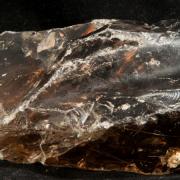
From cave paintings, murals and tapestries, we can see quite clearly that hair removal was common. However, this wasn’t through vanity (people in the Stone Age had bigger things to worry about!) Instead, it was a more practical thing to avoid frostbite and severe cold in their face. As any man will tell you, a long beard has the tendency to get very wet during a rainstorm! Now, imagine having a wet beard every day over the freezing cold winter. It could quickly freeze, causing devastating frostbite in the face. Remember, this was 100,000 years ago, during the ice age, so the air was chilly. During this time, they used seashells as tweezers. 60,000 years later, it seems they were using flint and sharpened stones like the ones pictured above. That has to be a rough shave.
Egyptians
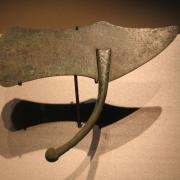
The Egyptians were perhaps the first to start shaving out of vanity. Having said that, the original motive for hair removal was heat. The Egyptian temperatures were raging hot, and excess body hair was hacked off. It was also a simple health solution. The Egyptians were among the finest inventors of early medicine, and they realized that disease travelled in beards, as it still does ladies. Eventually, however, it became a sign of civilization. The Egyptians understood a clean shave as a mark of sophistication. Rugged, hairy faces were considered outsiders by contrast.
Barbarians
It’s around this time that the term ‘barbarian’ emerged, and it was all due to facial hair. Barbarians were those who neglected their personal hygiene, leaving their faces hairy. In other words, they were ‘unbarbered’. Our dedication to shaving actually helped name an entire culture of barbarians, which seems to be returning.
Greeks and Romans
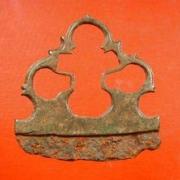
The Ancient Greeks and the Romans adopted the grooming techniques from the Egyptians. While they too saw it as a sign of civilization and sophistication, there was another reason. During battle, they noticed that long beards were easily grabbed by foes. It was much easier to kill a man with a long beard, so they were quickly chopped off. At this point, you must remember that personal razors were not available. A barber would cut the beard, meaning only the wealthy or those in the army were shaved.
The Middle Ages
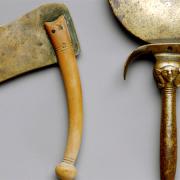
The Middle Ages are often seen as a retreat backwards into primitive life. There was much less innovation and invention than there was under the Egyptians, Greeks, and Romans. We quickly saw a move back to the untamed, untrimmed beards of old. That is, until the Catholic Church decided to get their way. During the Middle Ages, clerics were quick to distance themselves from the Jewish and Muslims. One way in which they did this was to force everyone to shave. In 1096, they introduced a law that banned beards.
Elizabeth I
Elizabeth I is regularly cited as the first person to begin using tweezers. It’s now a common part of any woman’s morning routine, but it originated over 500 years ago. Elizabeth I picked up the tweezers and took them to her eye brows to pluck them. She also used walnut oil, vinegar and ammonia to help reduce their appearance. All this created the appearance of an elongated forehead, which you can see in paintings to this day. It has since been adopted by women across the world. It was still another 400 years before anyone began to worry about hair below the neckline, however.
18th Century – the first personal razor
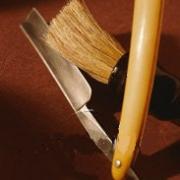
Until now, shaving was strictly kept to those who could access a barber. Standing in front of your own mirror and shaving was a very rare occurrence. Instead, you’d pay for a clean shave when you had your hair cut. That is, until the end of the 18th century, when Frenchman Jean-Jacques Perre invented the safety razor. He created a simple wooden guard over a traditional straight razor, and voila! Of course, they were still very expensive, and bought only by the rich for some time.
King C Gilette
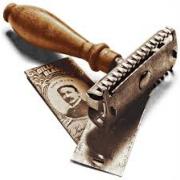
A travelling salesman and serial entrepreneur King C Gillette then created the razor we know today. In 1895, he solved a simple problem of Perret’s safety razor. It had no removable head, and ithad to be sharpened after every few weeks. Gillette (now a household name) created a removable and disposable razor blade. Once completed, Gillette secured a US army contract, putting a disposable razor in every soldier’s pack. It changed the world of shaving instantly.
Women jumped on the bandwagon
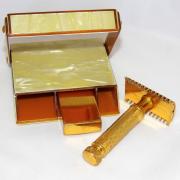
Until the early 20th century, shaving had been a male-dominated problem. However, in around 1915, women’s fashion mores began to relax. Skirts that showed the leg became popular, and so Gillette invented a razor blade especially for women. Until then, depilatory creams were the only method of hair removal for women.
Electric razors and Multiple Blades
And so we arrive in modern times, where electric razors and 5-blade cartridge razors are the norm. Invented by Jacob Schtick, the first electric razor failed quite spectacularly. However, it didn’t take long to perfect the design. Dry-shaving then quickly replaced traditional methods.
Today, the biggest problem shavers have is simply picking the best razor on the market that works for your face. 3-blade, 4-blade, or 6-blade are all available for your shaving pleasure. Figuring out what the best razor for you and trying to save money at the same time, well that is the tricky part and that is why shavemob.com is here to help.
Thanks for joining us on our weird and wonderful trip through the ages. We hope you learned a thing or two!








